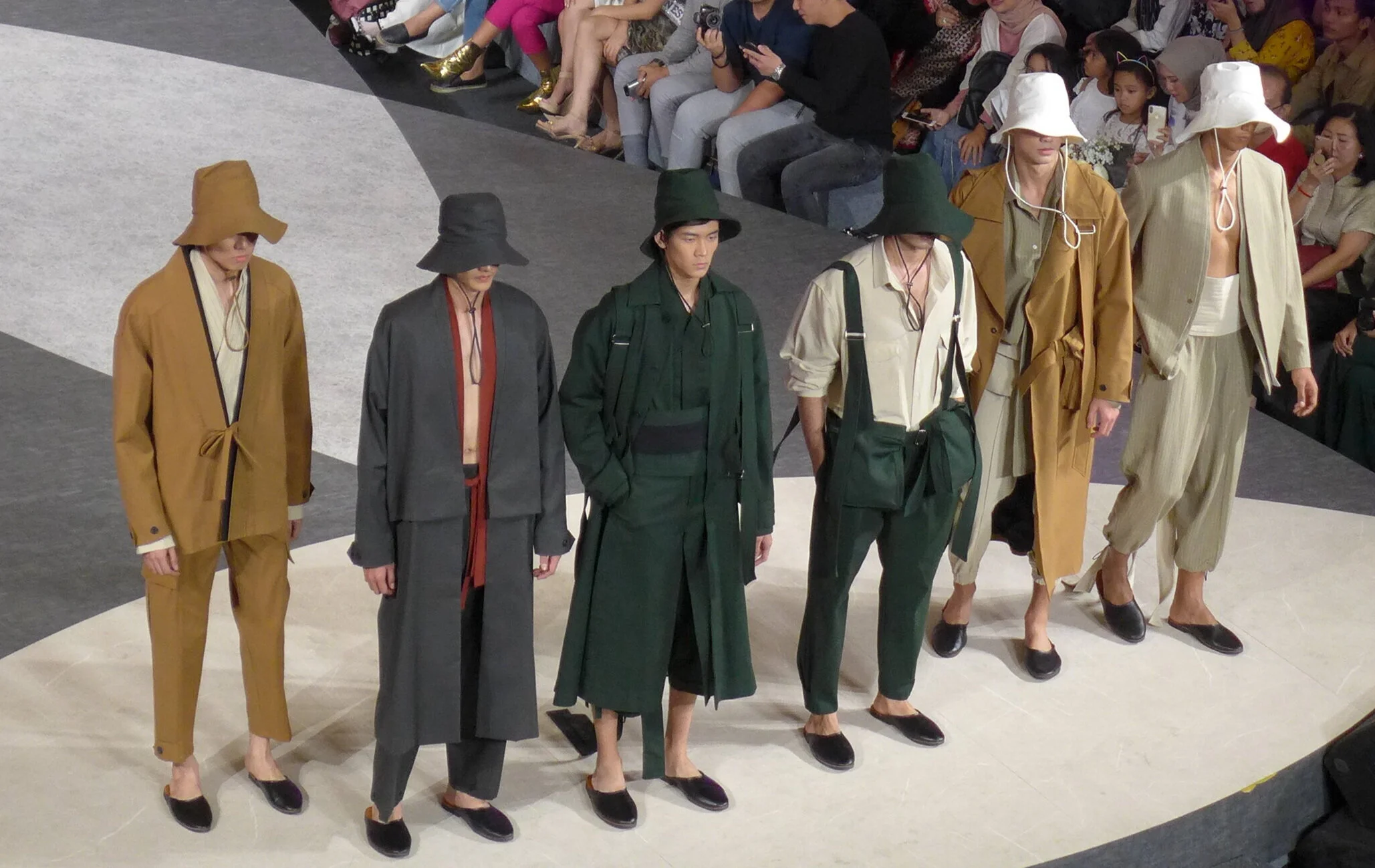JFW 2020: Missed opportunity in Indonesia fashion industry
Image: Jan Sober by Vanya Harapan/The Finery Report
After 11 years of fashion week, there seems to be two issues haunting Indonesia’s fashion industry: lack of variety and restricted reach. According to Jakarta Fashion Week (JFW) Director Lenni Tedja in a press conference, the event started using male models as icons this year in effort to catch up with demand in the male fashion category.
However, the number of menswear collection fall short in comparison to womenswear. Over the course of the week, the majority of designers present womenswear collection. Some of them slipped in a couple of male outfits, but the overall number is not significant enough.
Image: Danjyo Hiyoji by Vanya Harapan/The Finery Report
Danjyo Hiyoji’s menswear collection outshone the womenswear’s, while Jan Sober presented sophistication and crispness in its collection. In the sea of graphic tees and sweaters dominating male fashion, the Jan Sober collection is a breath of fresh air.
The potential in menswear is huge, but still largely untapped. If Off-White can stage a show during New York Fashion Week, why can’t Indonesian streetwear do it too?
Along with menswear, there are a few accessories brands that appeared on the runway, but some of them were there to complete the look, not to be shown as an entire collection of their own. For example, models in Tangan collection wore Chapelet shoes.
Accessories is another category that needs spotlight. Presenting accessories brand on the runway poses a challenge to the designer. Last year, Byo created clothes for its runway presentation. This year, the designer presented its latest collection with Sean and Sheila. Models strutted the runway in Sean and Sheila clothing while clutching Byo bags in their arms.
Image: Pvra by Vanya Harapan/The Finery Report
Collaborating with clothing brands might be the best solution for accessories brands, but turning the spotlight on the accessories itself, especially for shoe brands, is another milestone altogether.
The biggest question we have is how to maintain the hype from fashion week? In September 2016, JFW and Senayan City opened Fashionlink, a multi-brand retailer for the collections of Indonesian designers who were present on JFW. To boost traffic, JFW 2020 has several talk shows held on the store.
The store also collaborates with several designers to sell their runway collections immediately after the show. ‘See now buy now’ is a concept instigated by runway designer to compete against fast fashion brands that could produce knockoffs within two weeks. Fashionlink elevates the idea by hosting meet and greet with the designers.
Lazada, one of JFW 2020 sponsors, streamed three runway collections – Danjyo Hiyoji, Hattaco and Jenahara – on its site and allows consumers all over Indonesia to shop the collection straight off the runway. The intention is to combine offline and online shopping experience.
It’s the kind of reach that designers need due to Indonesia’s geography. The Indonesian fashion scene is currently concentrated in Java. Reaching other islands is an issue the fashion industry needs to tackle if it wants to grow.
Lazada is moving in the right direction through offline and online experience although they could feature more than three designers. Fashionlink, too, needs to get online and grow its online presence.
Fashion week should be a celebration of art and it should serve anyone who is interested in buying the art no matter where they are.



